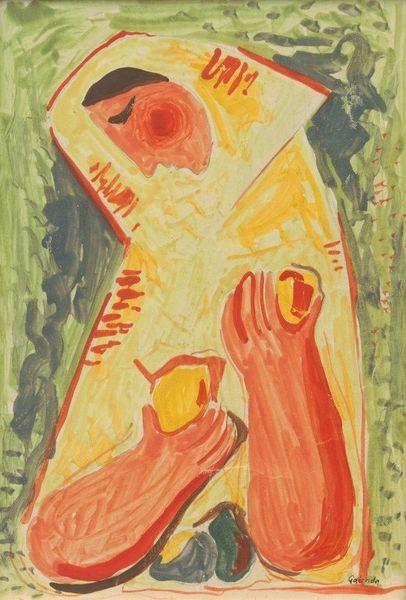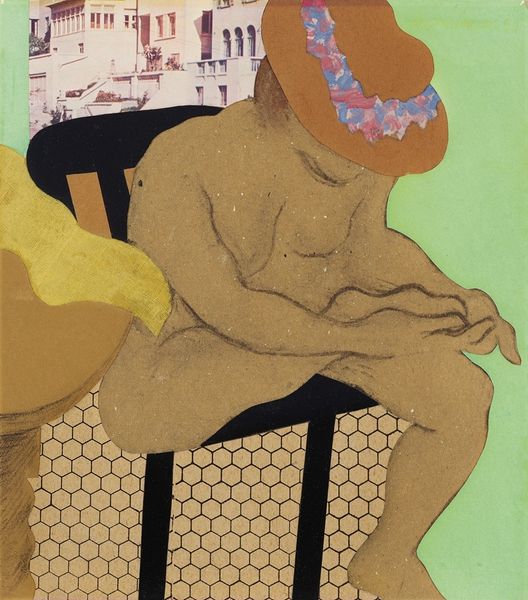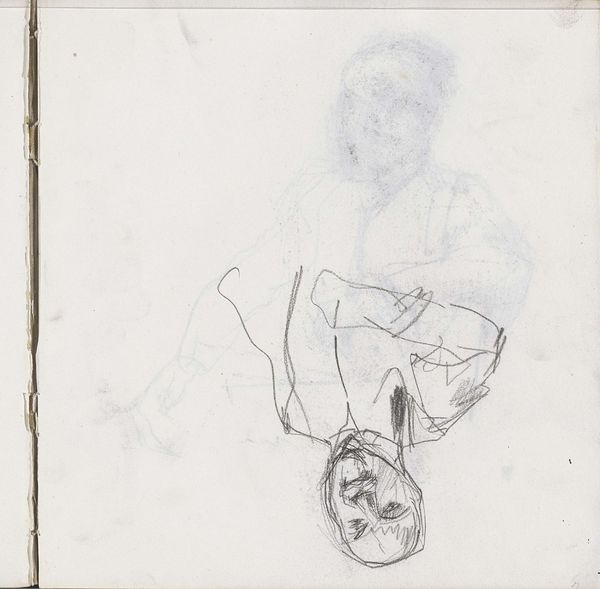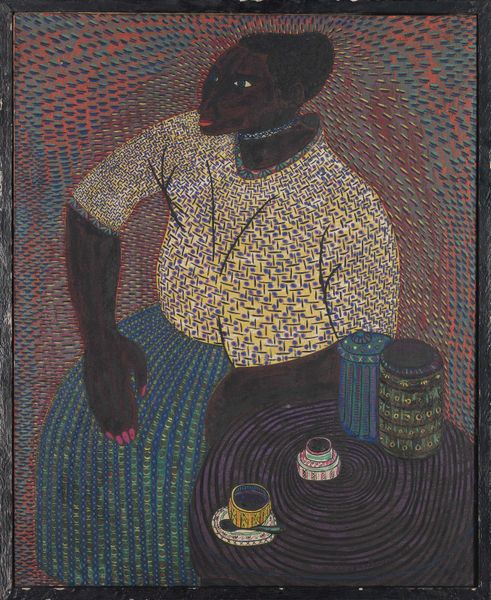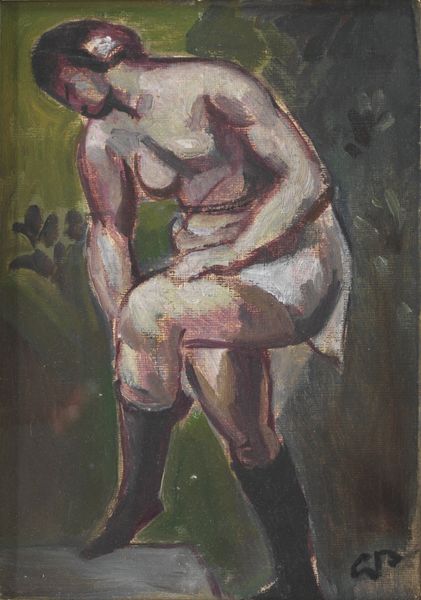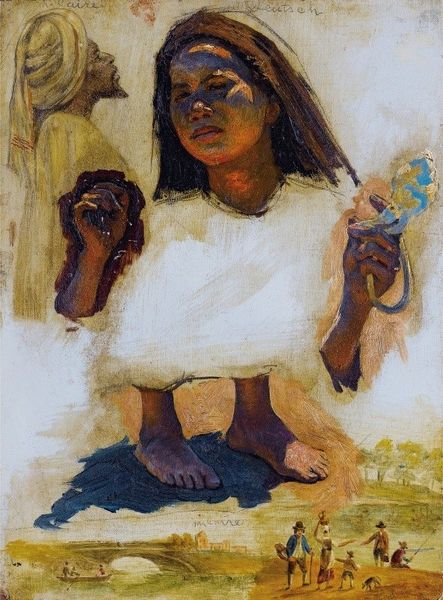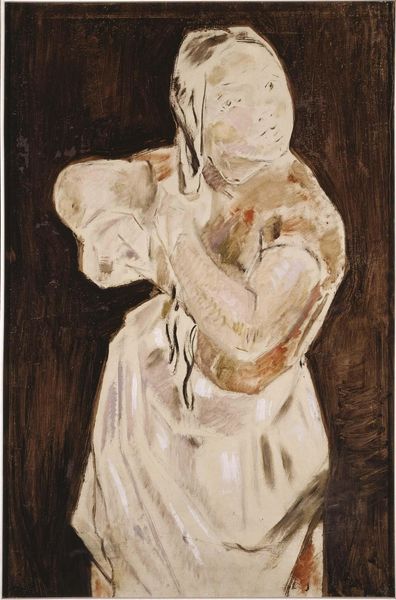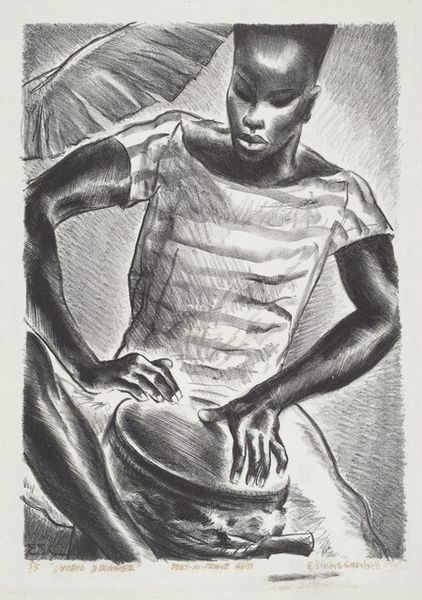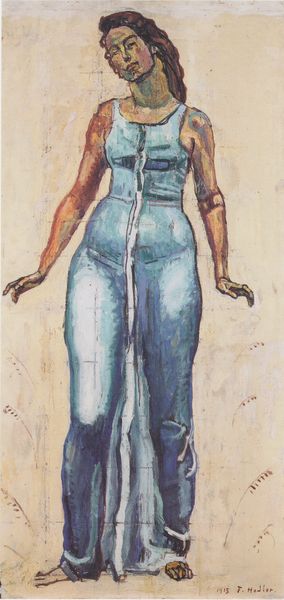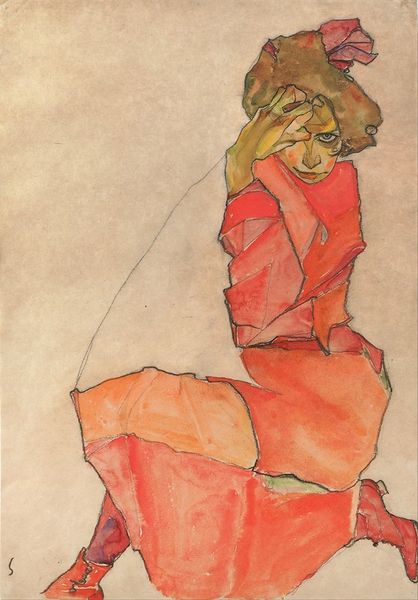
drawing, coloured-pencil, pastel
#
portrait
#
drawing
#
figurative
#
coloured-pencil
#
figuration
#
oil painting
#
underpainting
#
pastel
#
post-impressionism
#
portrait art
Copyright: Public Domain: Artvee
Paul Gauguin created this pastel drawing of a Tahitian woman, sometime during his time in French Polynesia. Gauguin sought an escape from Western society, and like many artists and writers of the time, believed he could find it in so-called ‘primitive’ cultures. Here, a Tahitian woman is shown in a crouching position, her gaze directed upwards and outwards. Gauguin’s artistic project romanticized the culture, and projected his fantasies onto the bodies of Tahitian women. While he aimed to capture what he perceived as the authenticity of Polynesian life, his work often exoticized and sexualized the local population. The composition, with its visible gridlines, hints at the artificiality inherent in Gauguin’s vision. The image invites us to consider the complex power dynamics involved in cross-cultural representation, and to question the artist's intentions and cultural biases. It serves as a reminder to critically examine the colonial gaze in art, and to reflect on the importance of understanding the historical and social contexts that shape both the creation and reception of art.
Comments
No comments
Be the first to comment and join the conversation on the ultimate creative platform.


